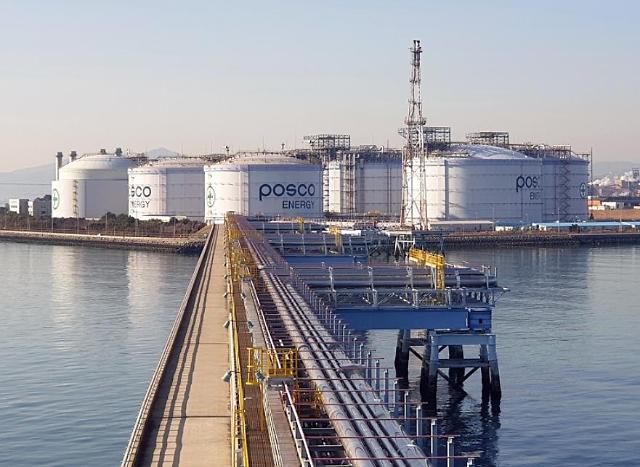
[Courtesy of POSCO]
About 3,700 tons of liquefied natural gas (LNG) was imported every month between January and August 2022. LNG is widely used in South Korea as fuel for vehicles, power plants, and other industrial purposes. At home, natural gas is mainly used for heating and cooking.
There are a total of five LNG terminals in South Korea. Three terminals are operated by the state-operated Korea Gas Corporation. One in the western seaside town of Boryeong is operated by private companies GS Energy and SK E&S and another one in Gwangyang is operated by POSCO. The total capacity of LNG storage terminals is about 1.5 million kiloliters.
South Jeolla Province said that the grounds will be broken for the new LNG terminal in Gwangyang in the second half of 2023. The construction will be managed by a joint venture between POSCO and POSCO International, the trading arm of POSCO. The terminal will house two tanks with a capacity of 200,000 kiloliters each. They would be able to provide electricity to 770,000 households for three months. The mega complex will be built by 2025.
"The construction of the new LNG terminal will vitalize the local economy of Gwangyang and its surrounding areas as well as create new job opportunities," POSCO CEO Choi Jung-woo said in a statement on January 31. The steelmaker predicted that about 600 construction workers will be deployed to the terminal site.




